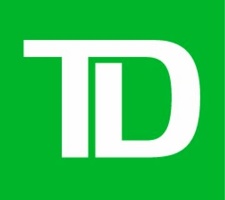@TDAM_Canada
Investor Knowledge + 5 Minutes = New Thinking
Fixed income has long been considered a "boring" and "less volatile" asset class. However, over the last couple of years, we've had to reconsider those characterizations. The unprecedented increase in rates by central banks to tame inflation led to massive drawdowns in all asset classes, including fixed income.
Now that the "lower for longer" interest rate theme has been replaced with the "higher for longer" narrative, investors are increasingly unsure not only about what to anticipate in the long run for interest rates, but how to invest with this uncertainty. This is where bond laddering strategies come front and centre. What exactly is bond laddering?
Bond laddering
Bond laddering is a strategy where an investor purchases bonds with different maturity dates to help reduce interest rate risk and generate predictable income in the future. As each bond matures, the proceeds are then reinvested as the next "step" on the bond ladder to create a step of investments with staggered maturity dates (or example, each year one bond matures). The laddering (or staggering of purchase and maturity dates) protects investors from fluctuations in interest rates.
When interest rates rise, investors have the opportunity to invest again at a higher more favourable interest rate. There is a drawback (as there always is). If interest rates fall, investors will need to reinvest matured funds into lower interest rate bonds. From a practical standpoint, a laddered bond strategy prevents investors from having to forecast future interest rates or make complicated reinvestment decisions. If interest rates rise, you can take advantage of the higher rate by reinvesting the money from the matured bond. On the other hand, if rates fall, a large portion of your portfolio can still benefit from the original (higher) rates that applied when you made the initial investment.
Five-year anniversary of the TCSB and TUSB
Bond laddered investments like the TD Short Term Corporate Bond Ladder ETFs have been able to provide investors with portfolio stability at a time when yields are at levels not seen in a decade. This year the TD Select Short Term Corporate Bond Ladder ETF (TCSB) and TD Select US Short Term Corporate Bond Ladder ETF (TUSB) are celebrating 5 years of helping investors with:
- Income stability and predictability: High-quality investments with attractive yields in the current environment help offset interest rate risk.
- Capital preservation: Low volatility helps to minimize risk and preserve capital.
- Cash flow flexibility: The bucketed-laddered investments allow investors to match cash flows to their investment needs.
- Diversification: Fixed income has a low correlation with other riskier assets like equities.
- Risk mitigation: The bucketed-laddered approach mitigates the interest rate and reinvestment risk during rate volatility.
An added benefit of the TD Short Term Corporate Bond Ladder ETFs comes in the form of issuer/security selection. These ETFs are well diversified across a range of sectors and Credit Research Analysts and Portfolio Managers maintain continuous dialogue to find opportunities that offer the best risk-adjusted returns for the ETFs. Events such as the mini-liquidity crisis that occurred in the first quarter of this year are examples of opportunistic periods for the team to identify and invest in attractive additions for the portfolio.
For more information about TD ETFs please visit our ETF Resource Centre.
The information contained herein has been provided by TD Asset Management Inc. and is for information purposes only. The information has been drawn from sources believed to be reliable. Graphs and charts are used for illustrative purposes only and do not reflect future values or future performance of any investment. The information does not provide financial, legal, tax or investment advice. Particular investment, tax, or trading strategies should be evaluated relative to each individual's objectives and risk tolerance.
Certain statements in this document may contain forward-looking statements (“FLS”) that are predictive in nature and may include words such as “expects”, “anticipates”, “intends”, “believes”, “estimates” and similar forward-looking expressions or negative versions thereof. FLS are based on current expectations and projections about future general economic, political and relevant market factors, such as interest and foreign exchange rates, equity and capital markets, the general business environment, assuming no changes to tax or other laws or government regulation or catastrophic events. Expectations and projections about future events are inherently subject to risks and uncertainties, which may be unforeseeable. Such expectations and projections may be incorrect in the future. FLS are not guarantees of future performance. Actual events could differ materially from those expressed or implied in any FLS. A number of important factors including those factors set out above can contribute to these digressions. You should avoid placing any reliance on FLS.
TD Asset Management Inc. is a wholly-owned subsidiary of The Toronto-Dominion Bank.
®The TD logo and other TD trademarks are the property of The Toronto-Dominion Bank or its subsidiaries.
 Canada
Canada

